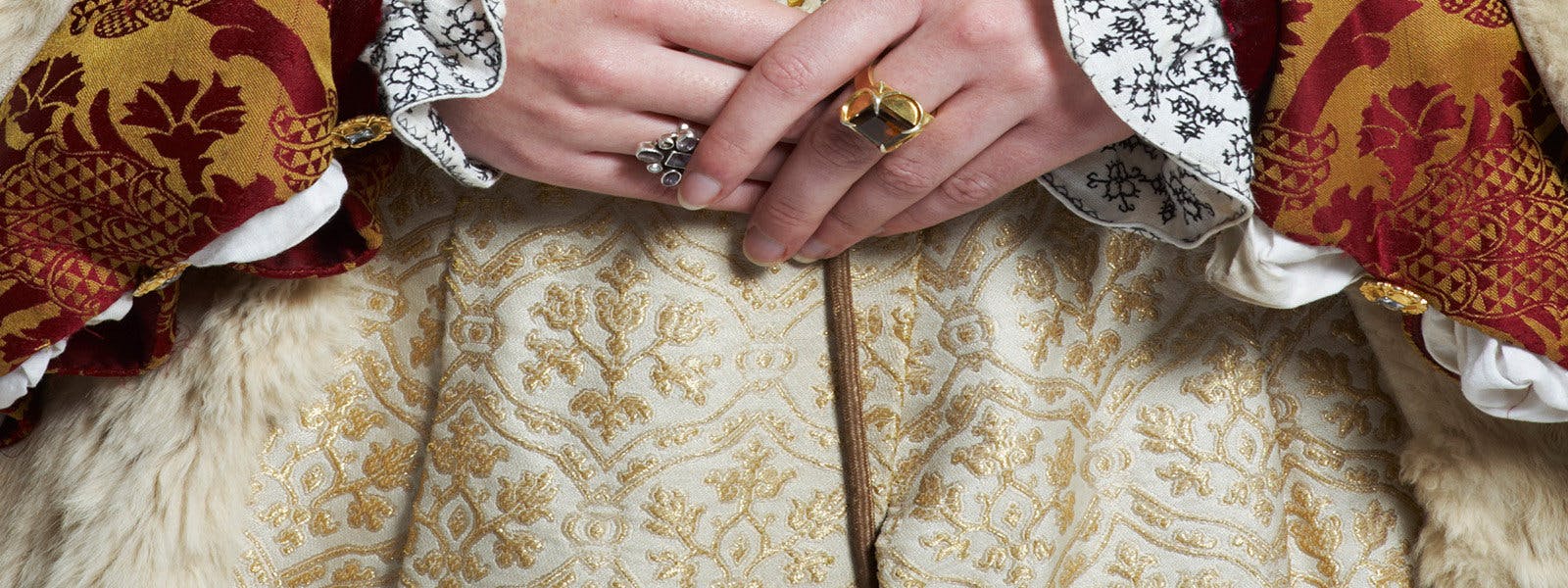
Video
About this learning resource
Format: Video
What was it like moving to Tudor England?
Step back in time and uncover the journey of Catalina of Motril, an enslaved woman who moved to England with a famous queen.
Perfect for schools, this short video explores migration, status and slavery in 16th century England. A great way to bring new stories and historical figures into the classroom.
This content is hosted on YouTube
This content may be using cookies and other technologies for which we need your consent before loading. To view the content, you need to enable cookies for "Targeting Cookies & Other Technologies".
Manage CookiesResource Information
Key Stage
- KS2 (age 7-11)
- KS3 (age 11-14)
- KS4 (age 15-16)
- KS5 (age 16+)
- Home Educators
Subjects
- History
Topic
- Tudors
- Diverse Histories
Type
- Videos
Palace
- Tower of London
- What similarities are there between Catalina of Motril and Katherine of Aragon?
- What differences are there between Catalina of Motril and Katherine of Aragon?
- What was the reason Catalina of Motril migrated to England?
- Are there any other examples of migration in Catalina of Motril’s story? Tip: think about the heritage of the people in Motril.
- Many people migrated to England with Katherine of Aragon, as part of her ‘household’. What different roles do you think these people might have had?
- Compare the experience of migrating in England in the 16th century to today (for example adjusting to a new country and people’s attitudes).
- Do you think people of the future will learn mostly about high status people from our own century? Why/why not?
1. Catalina of Motril and Katherine of Aragon had several similarities:
-
- Both women had their name changed by other people. Catalina of Motril’s original name is unknown. It is likely she was renamed after her new mistress when she was enslaved. Princess Catalina's name was changed by the British.
- Both women travelled from Spain to England and had to adjust to a new way of life.
- Both women gave birth to daughters.
2. There are many differences between Catalina of Motril and Katherine of Aragon:
-
- Katherine of Aragon was born into a Spanish powerful high-status family. She married into an English powerful high-status family. Whereas Catalina of Motril was enslaved and likely from humble origins. She married a crossbow maker.
- Katherine of Aragon was banned from seeing her daughter and died in England. Catalina of Motril lived with her two daughters for some time and they moved back to Motril.
- Katherine of Aragon is well remembered as Henry VIII’s first wife and most people alive today have heard of her. Catalina of Motril is not well known at all.
3. Catalina of Motril migrated to England with Katherine of Aragon as her bedchamber servant as part of a large ‘household’.
4. Another example of migration in Catalina of Motril’s story involves the people of Motril. They ar known as Moors and lived in an area of modern-day Spain. The Moors had African heritage and migrated from Africa to Spain. After the invasion from the Spanish, the Moors were forced to flee the area and migrate elsewhere.
5. Katherine of Aragon’s household might have included lots of different people:
-
- musicians (like the trumpeter John Blanke)
- cooks
- guards
- ladies in waiting.
6. Things that might have been similar for Catalina of Motril and people who move to England today might include:
-
- different weather
- different customs and behaviours
- different language
- feeling like an outsider.
7. People of the future might be more likely to learn about a wider range of people. Today there are new and different ways of recording stories, compared to the 16th century. These include photographs and social media.

Download short editable biographies of Tudor Kings and Queens for Key Stage 2, Key Stage 3, Key Stage 4 and Key Stage 5. Use key facts, activities and historic sources to explore these famous monarchs.

An editable timeline of the Tudor Religious Rollercoaster for Key Stage 2, Key Stage 3, Key Stage 4 and Key Stage 5. Use dates, key facts and activities to explore the religious changes during the Tudor period.

Download short editable biographies of Significant People from Hampton Court Palace for Key Stage 2, Key Stage 3, Key Stage 4 and Key Stage 5. Use key facts, activities and historic sources to explore important people linked to Hampton Court Palace.
